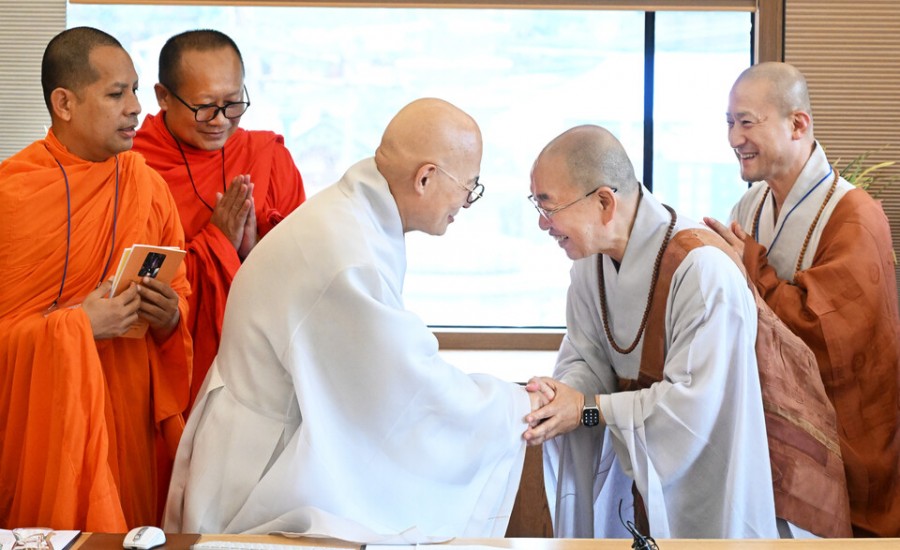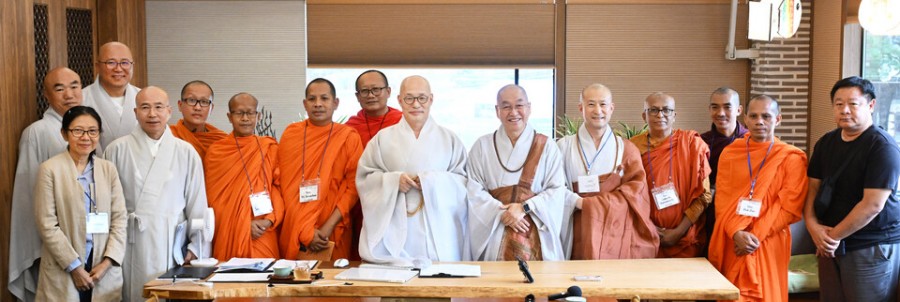English | INEB visited Most Ven. Jinwoo, the president of the Jogye Order.
Page information
Author Jogye On25-07-16 09:12 Views24 Comments0Related links
Body

On July 3, Most Ven. Jinwoo, the president of the Jogye Order of Korean Buddhism, received monks and Buddhist activists from the International Network of Engaged Buddhists (INEB) at the Order’s headquarters for an exchange.
Most Ven. Jinwoo was accompanied by Ven. Jingyeong, the director of the Social Affairs Office; Ven. Seongwon, the secretary-general of the Future Headquarters; Ven. Ilgam, the chief of staff; Ven. Pomnyun, the senior teacher for the Jungto Society, and Ven. Yusu, the head of the Jungto Retreat Center. Also present at the meeting were representatives from the INEB: Ven. Khongsin (Kuen On) and Phra Win (the secretary general of the Sakyadhamma Group) from Thailand; Ven. Kittisara (the director of the Bodhi Aye Meditation Center in Myanmar, and the professor at the International Peace University); Ven. Sayadej (the professor at Laos Buddhist University) from Laos; Ven. Sobichia (the chancellor of Preah Sihanouk Raja Buddhist University, Battambang Campus), and Ven. Phok Pan (the vice chancellor of Preah Sihanouk Raja Buddhist University, Battambang Campus) from Cambodia; INEB Headquarters director Ahn Chaly; and INEB secretary general Moo.
“The goal of Buddhism is enlightenment, and there is no other religion in the world or in history that promotes peace and inner peace as much as Buddhism,” said Most Ven. Jinwoo to the INEB delegation, emphasizing the importance of the role of monks in spreading the Buddha Dharma to the world.
“It is an honor to meet you,” said Ven. Galkande Dhammananda (the executive director of the Walpola Rahula Institute for Buddhist Studies) from Sri Lanka in greetings, “If I had not visited Korea, I would have had a narrower view, but through the exchange activities, I was able to broaden my horizons.”
Afterward, the INEB activists moved to the second floor of the Jogye-sa Buddhist College to discuss the topic of ‘Vision and Understanding of the Jogye Order of Korean Buddhism.’



